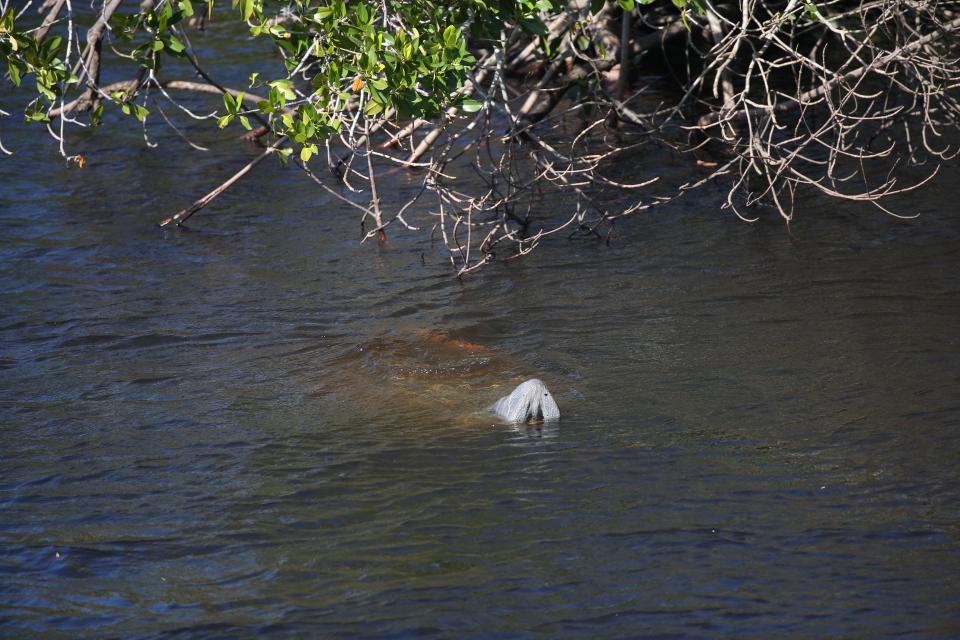'We’re quite concerned': Red tide, Lee County at center of 65 Florida manatee deaths
Lee County is the center of a manatee die-off that's related to a lingering and deadly red tide outbreak.
More than one-quarter of all documented manatee deaths so far this year have been in Lee waters, which have been at the center of a toxic red tide bloom.
The Florida Fish and Wildlife Conservation Commission says 65 manatee deaths were documented in Lee County waters through March 31 of this year.
"That is a lot," said Pat Rose, director of Save the Manatee Club. "Lee County has historically been one of the worst places for manatee red tide mortalities. We’re quite concerned."
Pasco County has the second highest number of known manatee deaths at 25. A total of nine manatee deaths were documented in Collier waters during that same period, according to FWC records.
On Florida's east coast authorities have been feeding Romaine lettuce to manatees who were dying during a famine that followed a dramatic loss off seagrass along the Space Coast.
Florida Red Tide Map: View current status
Red tide impacting Florida beaches: 6 things you need to know about toxic algae
Red Tide in SWFL: Red tide harming Naples, Collier County shoreline; respiratory issues reported

"Clusters of carcass locations were documented in Pinellas and Lee counties," an FWC press release reads. "The leading cause of death among necropsied carcasses is red tide-related."
Florida Fish and Wildlife recorded 227 manatee deaths
Statewide, 227 manatee deaths were tallied during the first three months of the year.
One hundred and nineteen of the 227 carcasses were not necropsied by biologists, who would examine the carcass to determine a cause of death.
Four dozen dead manatees found in Lee waters were not examined, which means the cause of deaths for those animals will likely never be known.
"One of the difficulties is those 48 were not necropsied," Rose said. "We were pushing for more resources and funding, but I don’t know how well that will beef back up the necropsy program. It makes it more difficult than it was when they were able to necropsy the vast majority of manatees."
More: Lessons learned: Reporter recalls 12-day canoe trip through Everglades National Park
More: Feds planning a reservoir north of Lake Okeechobee, looking at other options
More: Kimberly's Reef coming together as FGCU creates underwater field laboratory
More: Here's how Fort Myers Beach, Southwest Florida are recovering 6 months after Hurricane Ian
Manatee numbers have been on the rise
Manatee numbers have grown over the past three decades, and the U.S. Fish and Wildlife Service lowered the manatee's listing status from endangered to threatened in May of 2017.
FWC estimates that there are 7,520 manatees in Florida waters during the winter.
Rose said some of the 48 manatee carcasses that weren't examined were likely boat kills, and that reporting only three boat deaths during a heavy die-off event can cause the public to think manatees are safer than they really are.
"Lee County has three watercraft deaths, and that’s a factor of a lot of manatees not being necropsied," Rose said. "People can look at that data and think the watercraft issue is getting better; but there are so many that aren’t necropsied, and a significant number of those would be watercraft mortality."
Connect with this reporter: Chad Gillis on Facebook.
This article originally appeared on Fort Myers News-Press: Red tide largely responsible for dozens of manatee deaths in Florida

